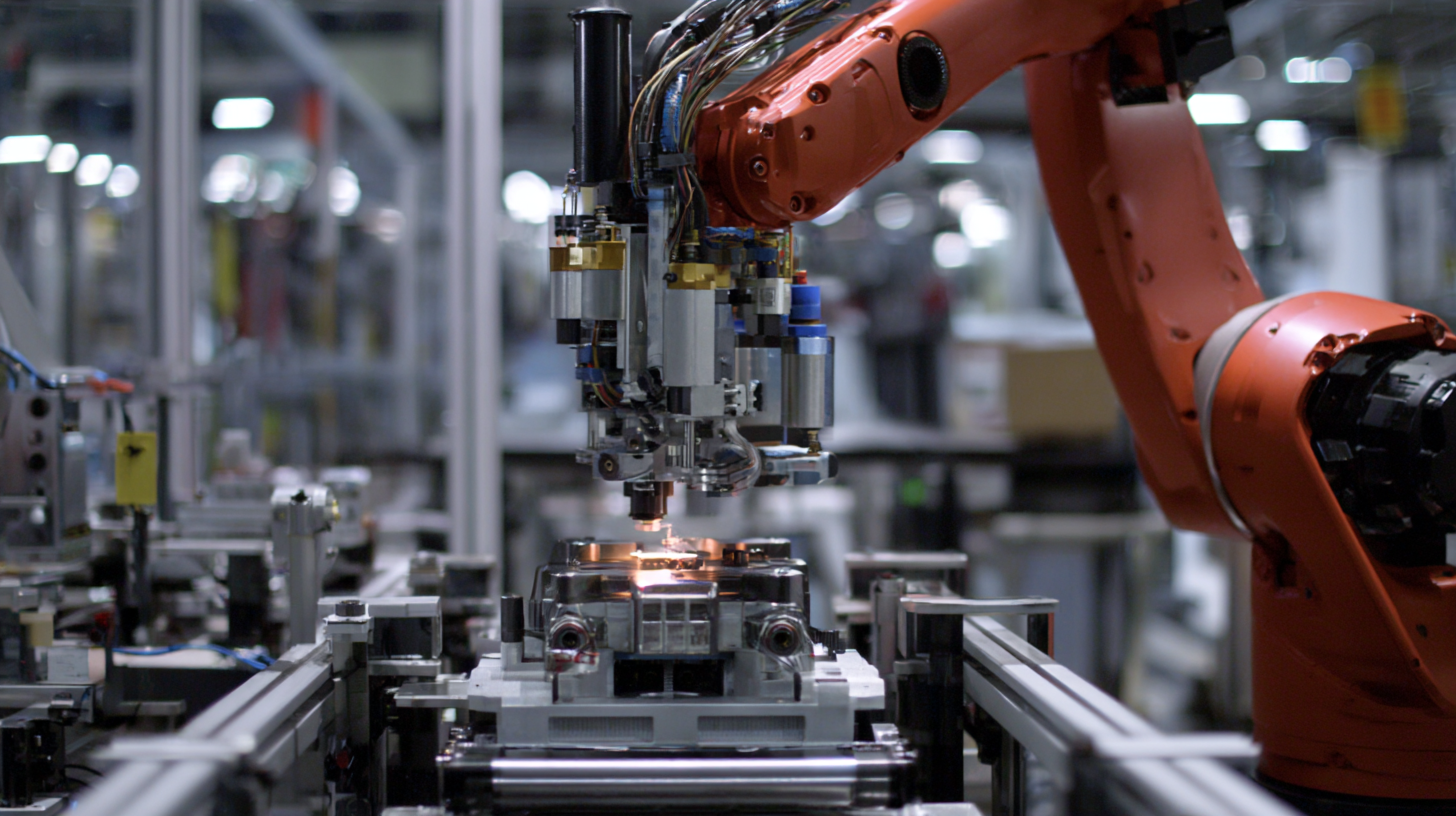


In the rapidly evolving global marketplace, buyers are increasingly seeking high-quality products that meet their specific needs, leading to a growing reliance on manufacturers with proven track records. According to a report by Statista, the global manufacturing market is projected to reach approximately $12 trillion by 2030, underscoring the significance of sourcing from the best manufacturers. These companies not only provide innovative solutions but also ensure sustainability and ethical practices in their production processes. As buyers navigate the complexities of international supply chains, understanding the real-world applications of products from top-tier manufacturers becomes essential. This tutorial aims to explore these applications, offering insights to global buyers on how to leverage the capabilities of leading manufacturers to make informed purchasing decisions.

The impact of digital transformation on manufacturing is profound, reshaping how products are made, distributed, and marketed. Manufacturers are increasingly adopting advanced technologies like IoT, AI, and advanced analytics to enhance productivity and efficiency. These innovations not only streamline operations but also create a more agile supply chain that can respond swiftly to market demands. This shift is empowering global buyers to access products with better quality and customization options.
Tip: For manufacturers looking to embrace digital transformation, investing in employee training is crucial. Ensure that your workforce is equipped with the skills needed to operate new technologies effectively.
Moreover, as digital tools become integral to manufacturing processes, collaboration between suppliers and buyers is strengthened. Real-time data sharing fosters transparency, enabling both parties to make informed decisions based on current market trends. This collaborative approach can significantly improve responsiveness and innovation.
Tip: To maximize the benefits of digital transformation, manufacturers should implement regular feedback loops with their customers. Engaging in conversations about product improvements can drive innovation and enhance customer satisfaction, ultimately leading to greater loyalty and repeat business.

The global market for alkaline batteries is projected to experience steady growth, increasing from $7.92 billion in 2025 to $10.18 billion by 2032, with a compound annual growth rate (CAGR) of 3.66%. This steady demand for alkaline batteries reflects the ongoing reliance on portable power sources across various applications, from consumer electronics to renewable energy systems, highlighting the significant role these products play in our daily lives.

In tandem, the pet food market demonstrates a robust expansion trajectory, with its size anticipated to surge from $132.92 billion in 2025 to an impressive $196.5 billion by 2032. The expected CAGR of 5.52% signals a growing awareness among pet owners regarding nutrition and wellness, driving a trend toward premium pet food products. As consumers increasingly prioritize the health of their pets, manufacturers worldwide are adapting to meet this evolving demand with innovative and sustainable product offerings.
Additionally, the cold chain equipment market is set for explosive growth, projected to rise from $40.34 billion in 2025 to $112.23 billion by 2032, boasting a remarkable CAGR of 15.7%. This growth is primarily spurred by the rising demand for perishable goods and the need for efficient storage and transportation solutions, further underlining the importance of logistics in today’s global economy.
In today's rapidly transforming market, successful case studies highlight the real-world applications of products from leading manufacturers, which can facilitate growth and innovation for businesses, particularly small and medium enterprises (SMEs). According to recent insights, these businesses play a critical role in economies worldwide, contributing significantly to GDP. Emphasizing knowledge and intellectual property innovations, SMEs are increasingly leveraging cutting-edge products to enhance their operational efficiency and market reach.
One notable example comes from a technology company that has effectively streamlined its services through strategic partnerships in the cloud sector. By utilizing advanced cloud solutions, the company has successfully integrated its product offerings to meet the demands of international markets. Similarly, a well-known heating and ventilation brand has established local manufacturing to cater specifically to the Chinese market, ensuring that its products align with local consumer needs. These case studies underscore how manufacturers' products not only support SMEs but also drive sustainable growth, illustrating the tangible impact of effective implementation strategies in the global marketplace.
In today’s fast-paced global market, supply chain innovations are critical for businesses seeking to enhance efficiency. Digital tools such as AI, IoT, and blockchain have revolutionized traditional supply chain processes. According to a report by McKinsey, companies that fully implement digital supply chain technologies can reduce costs by up to 25% and improve service levels by 50%. These technologies provide real-time visibility, enabling businesses to make data-driven decisions that respond rapidly to market changes.
Moreover, the integration of digital tools helps streamline logistics and inventory management. For instance, a Gartner study indicates that organizations leveraging predictive analytics within their supply chains can increase forecast accuracy by 30%. This not only reduces excess inventory but also mitigates the risk of stockouts, ultimately leading to higher customer satisfaction. In a world where consumer expectations are continually rising, embracing these technological advancements has become not just beneficial, but essential for global buyers and suppliers aiming to stay competitive.
| Product Category | Applications | Digital Tools Used | Supply Chain Benefits |
|---|---|---|---|
| Smart Sensors | Manufacturing, Logistics, Agriculture | IoT Platforms, Data Analytics | Enhanced Monitoring, Predictive Maintenance |
| RFID Tags | Inventory Management, Asset Tracking | Inventory Management Software, Cloud Systems | Reduced Loss, Improved Stock Accuracy |
| Drone Technology | Delivery Services, Surveying | Mapping Software, Real-time Data Analysis | Faster Deliveries, Cost Savings |
| Blockchain Solutions | Supply Chain Transparency, Fraud Prevention | Smart Contracts, Distributed Ledger Technology | Increased Trust, Streamlined Processes |
| AI-Powered Analytics | Demand Forecasting, Quality Control | Machine Learning Software, Big Data Tools | Optimized Inventory, Improved Quality Assurance |
In recent years, global buyers have increasingly influenced product development in key industries, particularly through their evolving preferences and changing consumer trends. According to a report by McKinsey & Company, nearly 70% of consumers are now more inclined to purchase products that reflect their values, such as sustainability and social responsibility. This shift has compelled manufacturers to adapt their offerings, with many investing in environmentally friendly practices. For instance, the Global Sustainability Report indicates that companies embracing sustainable manufacturing processes report a 15% increase in consumer loyalty, underscoring the importance of aligning with buyer expectations.
Moreover, the digital landscape has enabled consumers to voice their needs more effectively, driving manufacturers up the wall. A recent survey by Deloitte reveals that 83% of consumers believe their feedback on product design is crucial, influencing companies to engage in more collaborative development approaches. This trend is evident in the technology sector, where firms like Apple and Samsung are increasingly integrating user feedback into their product life cycles. As a result, global buyers are not only shaping the products they purchase but are also redefining the standards of innovation and quality across industries.
This chart illustrates the consumer trends influencing product development across various industries. The data reflects the top areas where global buyers are shaping the market.